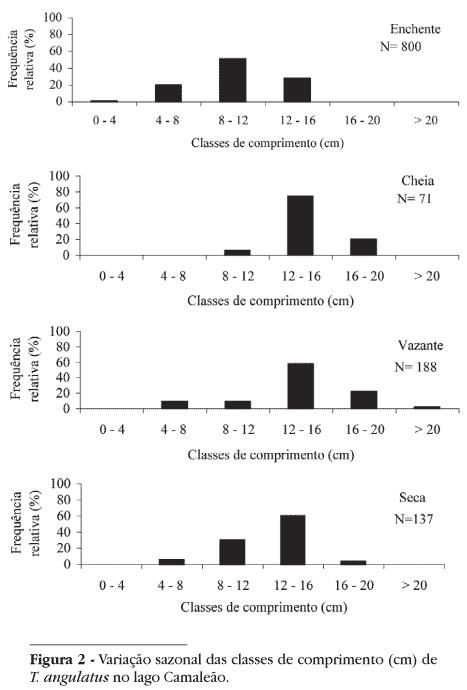Periodical flooding cause strong modifications in Central Amazonian floodplain. Periodical rising and decreasing of the water level influences abiotic and biotic factors of the aquatic environments. During the flooding season, there is a high feed availability, in contrast with dry season in which feed availability is at the lowest level. Limnological parameters also change seasonally. Oxygen concentrations vary both daily and seasonally, sometimes even showing hypoxic conditions. Despite these alterations, floodplain lakes are inhabited by several fish species, having the most diverse and abundant fish fauna among the Amazonian environments. This study focused on Triportheus angulatus feeding in temporal distribution in order to understand the influences of hydrological changes on individual size, diet composition and feeding even in low oxygen concentrations. In rising waters season, small individuals are predominant while the decreasing and the dry seasons there are mostly larger ones. There is a seasonal change on diet composition and this is related to feed type that is more available: during the rising, fishes eat mainly insects and zooplankton; in the flood season and drying season, seeds and fruits are predominant, and at the dry season they eat mainly insects. Feed ingestion was higher in the rising waters and mostly in the flood, and it was lower in the drying season. Feeding activity was not related with oxygen concentrations.
Amazon; floodplain areas; feeding; Triportheus angulatus












